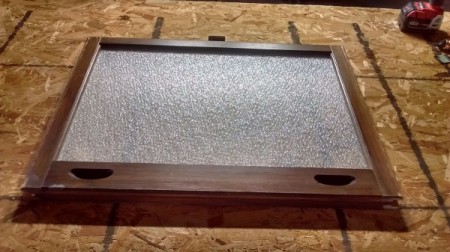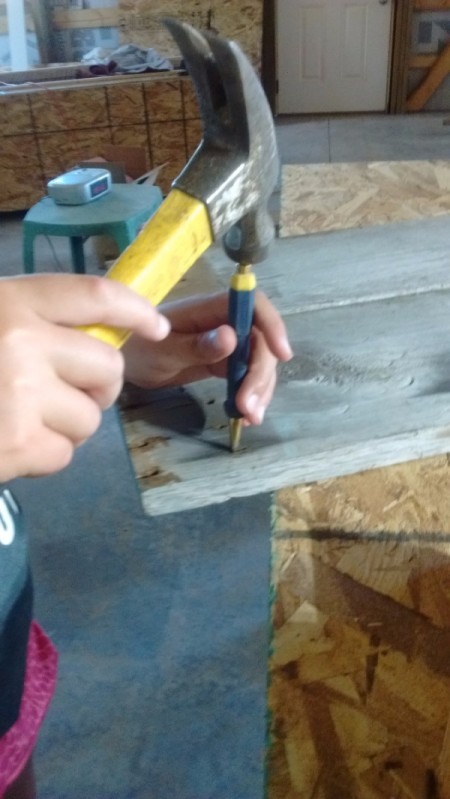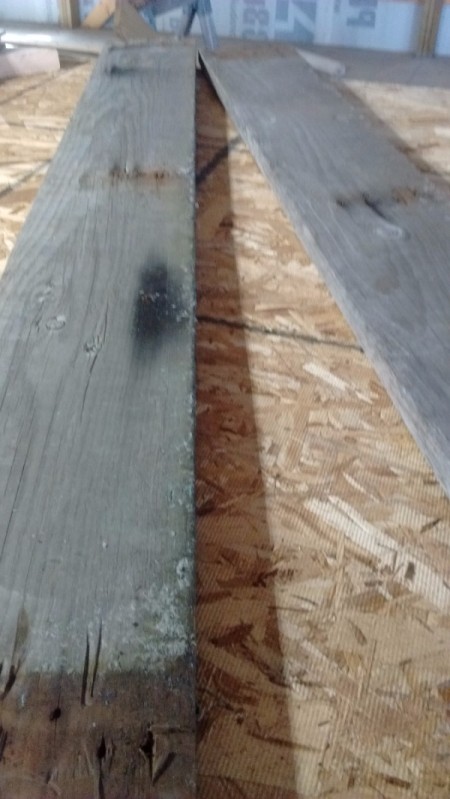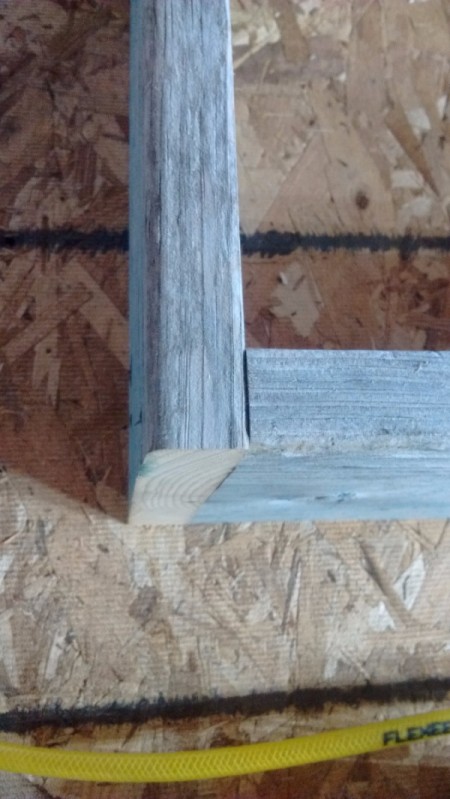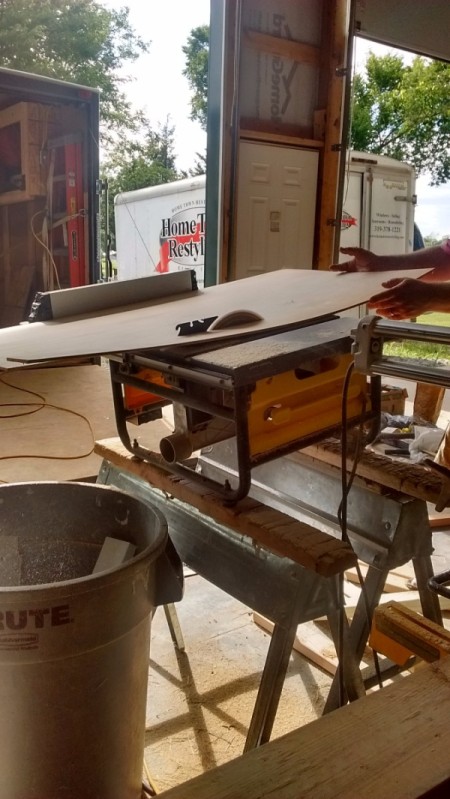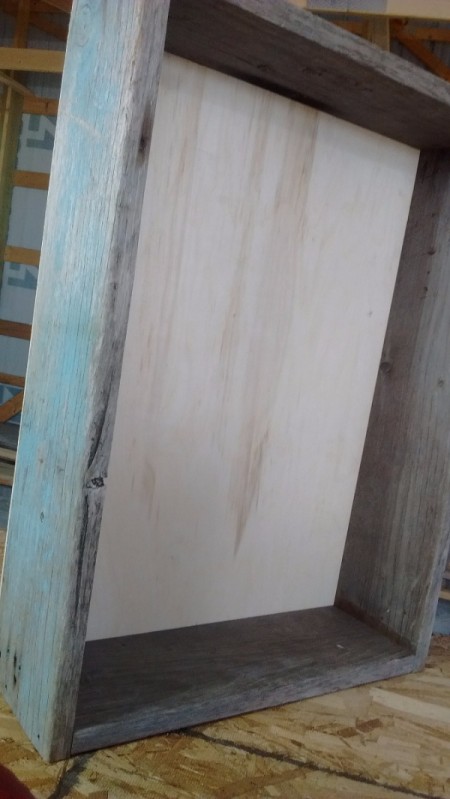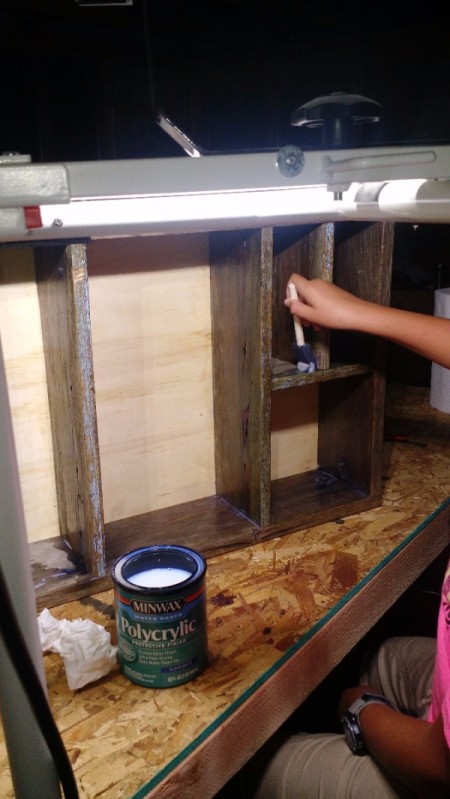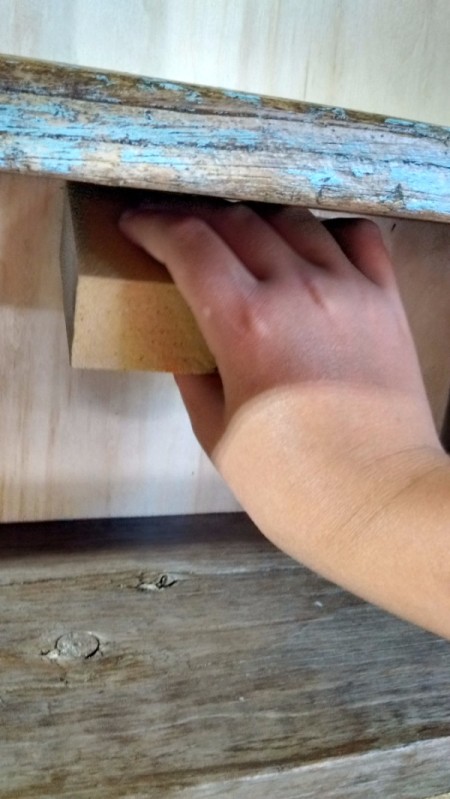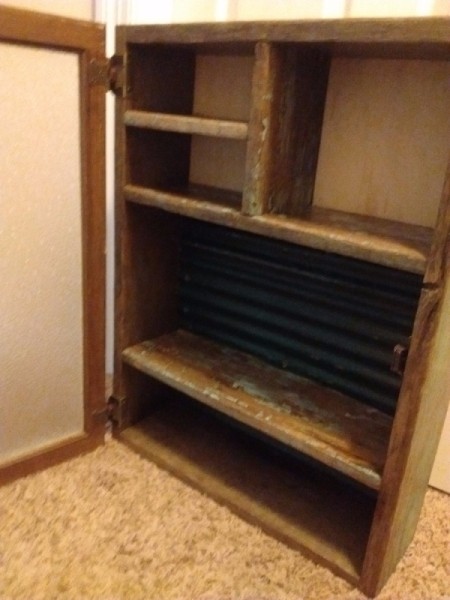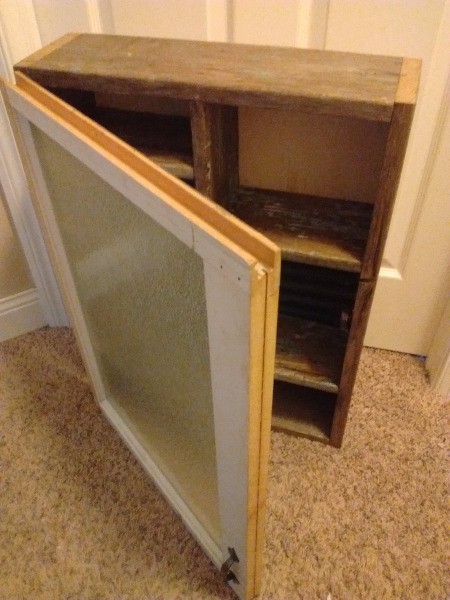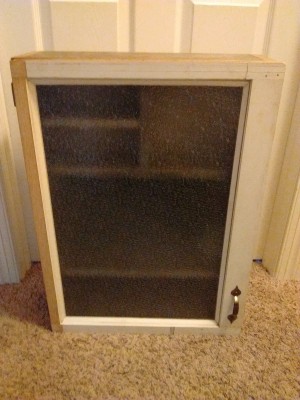 Once this cabinet was done, it had a look of unity and rusticness. The balance of my cabinet is asymmetrical, meaning it isn't balanced on both sides, but what rustic piece of furniture is? I used multiple examples of form when I used multiple rectangles off the top of my head. There is at least six. Also, I used varied textures, including the textured rain glass, the metal accents in the back, and the wood's own texture.
Once this cabinet was done, it had a look of unity and rusticness. The balance of my cabinet is asymmetrical, meaning it isn't balanced on both sides, but what rustic piece of furniture is? I used multiple examples of form when I used multiple rectangles off the top of my head. There is at least six. Also, I used varied textures, including the textured rain glass, the metal accents in the back, and the wood's own texture.
Total Time: About 8 hours, split up into three days
Supplies:
- 1 vintage translucent textured rain glass window
- multiple (4-6) pieces of weathered old wood, roughly 50 - the wood we used was about 100 years old
- 1 3/4 baltic birch plywood
- 8x 3 finished trim screws
- table saw
- chop saw
- Milwaukee cordless impact driver
- drill
- brad nail gun w/nails
- nail set
- hammer
- end pullers
- circular saw
- putty knife
- sanding sponge- fine 220 grit
- 1 qt polyurethane
- safety eyewear
- spray bottle or paper towel
- antique magnetic catch
- antique brass handle
- antique brass hinges
- clear NPC caulk
- 3-4 null foam brushes
Steps:
Notice: I am working wet, meaning I used a damp cloth to get the wood damp so any possible lead dust will not be inhaled while sanding it.
- First, all window hardware needs to come off. I used the Milwaukee cordless impact driver.
- Next, all the surfaces on your window need to become level by using the table saw.
- The stain on my window was in good shape, therefore it did not need sanding or new stain.

- I used reclaimed wood. The problem with that is, there are almost always screws or nails. I used a nail set, hammer, and end pullers to pull out most of them.

- Some of my wood had splits around the edges so I had help cutting them down to a width where all of our pieces didn't splinter. I used the table saw. After that I had some help using the chop saw to cut two pieces 27" from each piece of wood, then two 18 ¼" pieces which are not the width of the window because I am making butt joints, as you will see in the next step.

- I assembled the box or frame. I used our nail gun to tack the edges together in a more quick manner, then we will reinforce them with screws.

- Now I am ready to use the piece of baltic birch plywood. I had help cutting it so it is 20¼" x 27". The tools used were a circular saw and table saw.

- I used the square edges of the plywood to square the frame and secured it with our brad nail gun.

- Moving on to another board, I have to use the putty knife and the sanding sponge to knock off the loose paint and debris. I have more help using the table saw again to rip (cut) it to width. I used the chop saw to cut it to length, which is 18 ¼" wide.
- I placed my shelves as follows, the bottom shelf was 5 ½", the middle shelf was 10", and the top shelf was 8". I made a divider for the top with a micro shelf. They are not necessary, but a customized cabinet is not something you see every day.
- At this point in time I opened up the can of polyurethane and I used foam brushes to cover all of the sides.

- Once all of the layers were dry I sanded down all the sides so they were smooth and then put another coat on.

- At this point in time, I am now able to put on all of my hardware. I position my hardware where I want it.
- Then I made pilot holes using a drill with a 1/16 sized bit to make sure that when screwing in the screws my wood will not split.
- I used the screws that come along with my hardware and I installed them in the appropriate spots. This includes the handle, hinges, and magnetic catch. All contribute to the mounting and operation of the door.
- When I was making my cabinet, I was going to stop there then someone suggested using some old corrugated metal on the back of it.

- I used tin snips to cut out the size of the middle shelf and the bottom. I had some help because the metal is old and tough.
- Now I used our caulk gun, and I put it on the back of the bottom and the middle shelves.
- I screwed in 3 ¼ x ¼ drive self-tapping sheet metal screws to ensure that the caulk holds it properly.
- After the caulk dried I used a damp paper towel to remove any particles or dust, then I cover everything in a layer of polyurethane.
- After the last layer of polyurethane dried, as liquid turns to solid a handcrafted primitive style cabinet is finished.

 Once this cabinet was done, it had a look of unity and rusticness. The balance of my cabinet is asymmetrical, meaning it isn't balanced on both sides, but what rustic piece of furniture is? I used multiple examples of form when I used multiple rectangles off the top of my head. There is at least six. Also, I used varied textures, including the textured rain glass, the metal accents in the back, and the wood's own texture.
Once this cabinet was done, it had a look of unity and rusticness. The balance of my cabinet is asymmetrical, meaning it isn't balanced on both sides, but what rustic piece of furniture is? I used multiple examples of form when I used multiple rectangles off the top of my head. There is at least six. Also, I used varied textures, including the textured rain glass, the metal accents in the back, and the wood's own texture. 